
Common warning lights on a dashboard & what they mean
Arrrrg! The engine won’t start and every single warning light on your dashboard is lit up like the aurora borealis. This obviously doesn’t indicate good news. As you sit there waiting for recovery you may find yourself wondering ‘what on earth do all of these lights mean?’. Knowing what each light represents and what it means can help you avoid a car breakdown or even full engine failure. In this article, we’ll take you through all of the common warning lights on a dashboard and what they mean.
Power steering (EPAS light)
 This light could appear on your dashboard at any time and for a myriad of different reasons. It means that there is a problem within the steering system. When you see this light you should be prepared for the steering to become heavy making it harder to navigate the car in the right direction. If you’re driving at a low speed then this will be no more than an annoyance when trying to manoeuvre. However, at high speeds, this is really hazardous and you should immediately try to slow down and pull over into the nearest safe place.
This light could appear on your dashboard at any time and for a myriad of different reasons. It means that there is a problem within the steering system. When you see this light you should be prepared for the steering to become heavy making it harder to navigate the car in the right direction. If you’re driving at a low speed then this will be no more than an annoyance when trying to manoeuvre. However, at high speeds, this is really hazardous and you should immediately try to slow down and pull over into the nearest safe place.
Engine warning (ECU)
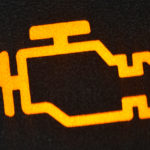 This warning light doesn’t always indicate something as dramatic as you’d imagine. Often it can be down to a small faulty electrical sensor. However, there are occasions when it reflects a much larger issue. If you see the ECU warning light combined with a lack of power or intermittent acceleration then it’s likely you’ll be experiencing what’s called a misfire. Or there will be another fault which is preventing the engine from responding properly to your signals. If the engine warning light is showing you should take the car to a garage immediately. If the car is not driveable or you don’t feel safe then call your roadside assistance provider.
This warning light doesn’t always indicate something as dramatic as you’d imagine. Often it can be down to a small faulty electrical sensor. However, there are occasions when it reflects a much larger issue. If you see the ECU warning light combined with a lack of power or intermittent acceleration then it’s likely you’ll be experiencing what’s called a misfire. Or there will be another fault which is preventing the engine from responding properly to your signals. If the engine warning light is showing you should take the car to a garage immediately. If the car is not driveable or you don’t feel safe then call your roadside assistance provider.
Brake warning light
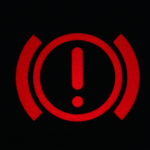
The brake warning could signal a fault with the brakes or a leak in the brake fluid. Either way, it’s incredibly important that you seek professional advice on repairing the problem as soon as possible. Your brakes are one of the most important safety features on your car so it really is very important that any problem being highlighted by this warning light is rectified.
Diesel particle filter warning (DPF)
 This light will only be on diesel-powered cars. A diesel particle filter is a common feature on most modern diesel engines. It is designed to remove soot from the exhaust which prevents damage to the engine and reduces emissions. If you have ever been behind a car that releases a big puff of black smoke when it pulls away then it’s because there is a problem with the diesel particle filter. If you leave a fault with a DPF for any period of time it can be expensive to repair and be causing bigger damage to your engine. DPF’s do get blocked so ensuring you maintain a regular service pattern is essential to help avoid problems.
This light will only be on diesel-powered cars. A diesel particle filter is a common feature on most modern diesel engines. It is designed to remove soot from the exhaust which prevents damage to the engine and reduces emissions. If you have ever been behind a car that releases a big puff of black smoke when it pulls away then it’s because there is a problem with the diesel particle filter. If you leave a fault with a DPF for any period of time it can be expensive to repair and be causing bigger damage to your engine. DPF’s do get blocked so ensuring you maintain a regular service pattern is essential to help avoid problems.
Battery charge warning
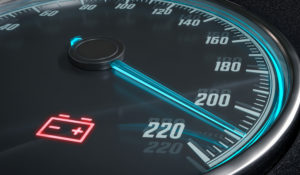 You’ll probably be familiar with this light as when you start your ignition this light should flash on for a couple of seconds before disappearing. If the light does not go away it could indicate a problem with the car’s electrical system. Other reasons for the battery charge warning light to appear include a bad connection or damaged cabling. It could also point towards a faulty battery or alternator. If you’re experiencing a problem with your battery charge then you could eventually run out of electrical power and come to a stop because the car isn’t charging. Worst case scenario the battery charge warning light can appear if the alternator drive belt is breaking. This is a more serious problem because it’s used by other elements of the engine such as the coolant pump and power steering.
You’ll probably be familiar with this light as when you start your ignition this light should flash on for a couple of seconds before disappearing. If the light does not go away it could indicate a problem with the car’s electrical system. Other reasons for the battery charge warning light to appear include a bad connection or damaged cabling. It could also point towards a faulty battery or alternator. If you’re experiencing a problem with your battery charge then you could eventually run out of electrical power and come to a stop because the car isn’t charging. Worst case scenario the battery charge warning light can appear if the alternator drive belt is breaking. This is a more serious problem because it’s used by other elements of the engine such as the coolant pump and power steering.
Tyre pressure warning
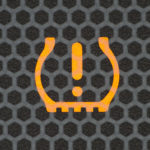
This handy feature tells us if our tyre pressures are out. It used to be a feature only on luxury or high-end cars, however, a lot of modern cars offer this feature as standard nowadays. The system can sense a change in the tyres pressure which highlights a puncture.
Coolant warning light
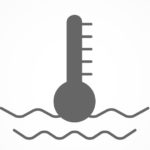 In the absence of coolant, the engine of your car would heat to such high temperatures that it would weld itself together. If you see this light pop up on your dashboard then it will likely mean that you need to top up your coolant. Pop the bonnet and check the gauge on the side of the tank, topping it up if necessary.
In the absence of coolant, the engine of your car would heat to such high temperatures that it would weld itself together. If you see this light pop up on your dashboard then it will likely mean that you need to top up your coolant. Pop the bonnet and check the gauge on the side of the tank, topping it up if necessary.
If the coolant warning light is on and you notice your engine’s temperature gauge rising then your engine is overheating. An overheating engine could be the result of something like head gasket failure or something minor like a leak. Our advice is to seek professional help as soon as possible to avoid an expensive repair.
Oil warning light
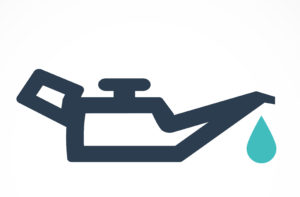
Much like in the case of the coolant light, if an oil warning light comes on then it could be because the temperature of your oil gets too high. Similarly, it could also be because the oil level is low or the oil pressure is too low. Oil pressure and oil temperatures are important and avoiding either getting too low or high is essential. Oil lubricates the engine parts so if temperatures are too high or pressure is too low then it’s effectiveness as a lubricant can be reduced significantly or disappear altogether. If your engine is not properly lubricated your engine will sustain expensive damage. Call a garage or roadside assistance immediately.
Airbag warning light
 The airbag is a major safety feature in modern cars. If there is a problem with your airbag then it probably won’t deploy during an impact so you and your passengers could be at risk. The other reason you should get this checked out is that it could go off at any time. If you’re driving this could give you a nasty shock and cause an accident.
The airbag is a major safety feature in modern cars. If there is a problem with your airbag then it probably won’t deploy during an impact so you and your passengers could be at risk. The other reason you should get this checked out is that it could go off at any time. If you’re driving this could give you a nasty shock and cause an accident.
Seatbelt warning light
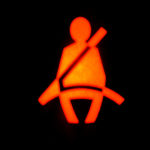 This light is to alert the driver that someone isn’t wearing their seatbelt. It is the responsibility of the driver to ensure their passengers are wearing their seatbelts. You could be fined if the police discover you or your passengers are not wearing seatbelts. If you’re not carrying passengers and the light comes on, check that there isn’t anything heavy on the seat confusing the sensors. Alternatively, it could be a loose wire or small fix.
This light is to alert the driver that someone isn’t wearing their seatbelt. It is the responsibility of the driver to ensure their passengers are wearing their seatbelts. You could be fined if the police discover you or your passengers are not wearing seatbelts. If you’re not carrying passengers and the light comes on, check that there isn’t anything heavy on the seat confusing the sensors. Alternatively, it could be a loose wire or small fix.
Keep your eyes peeled for these warning lights and if you’re ever unsure, speak to your local garage. Regular servicing and maintenance of your vehicle is essential. Keeping this up will help avoid surprises from your warning lights. But if you do encounter a warning light appear on your dash. don’t just ignore it. Left unattended they can lead to bigger problems and you could be faced with a large and unexpected repair bill.
